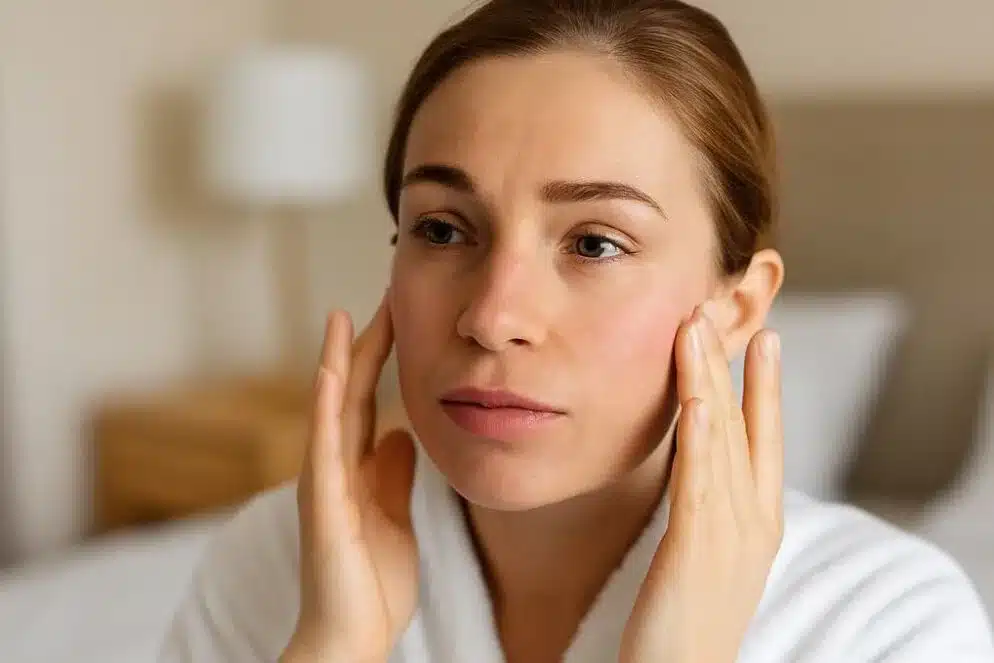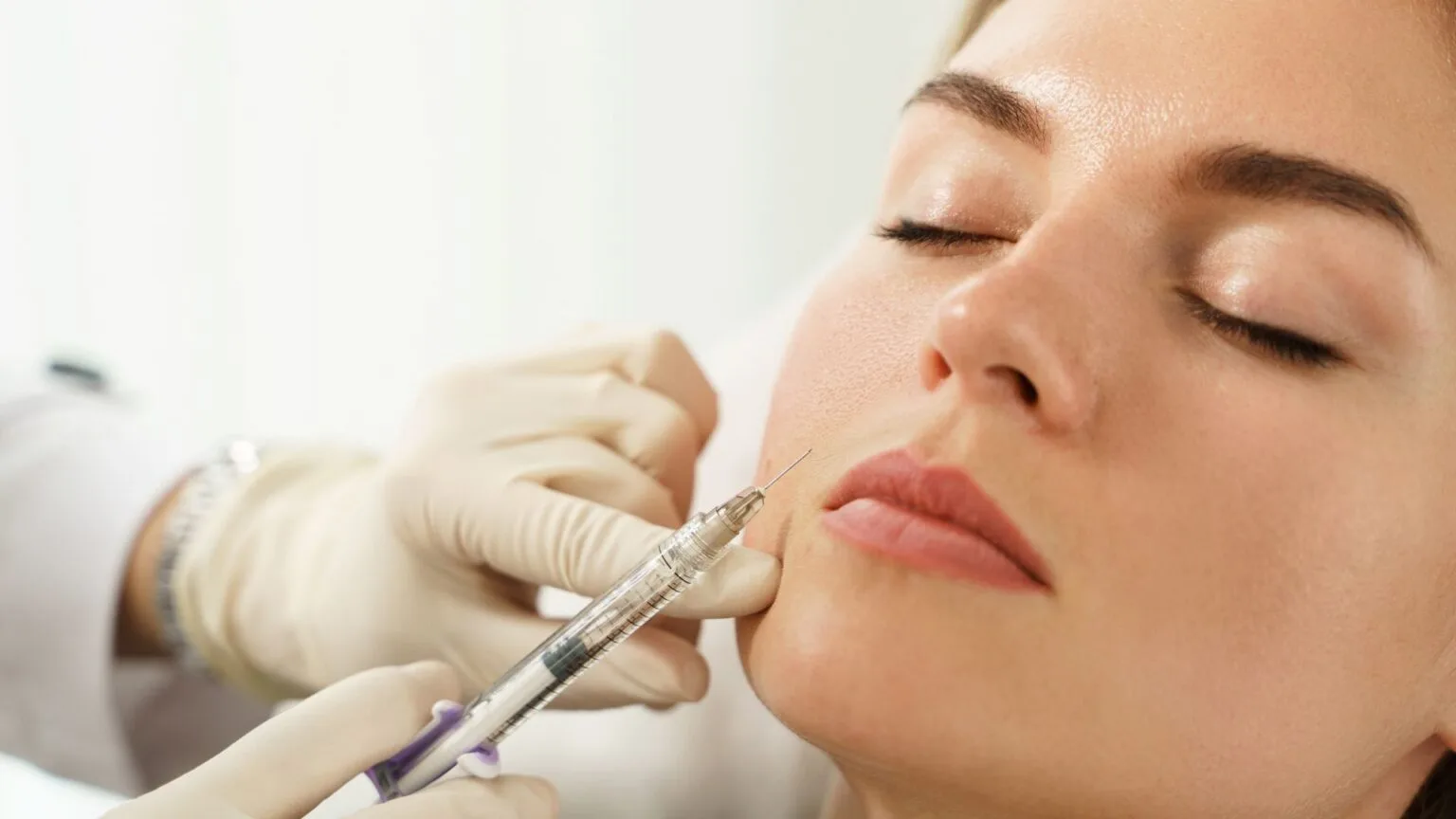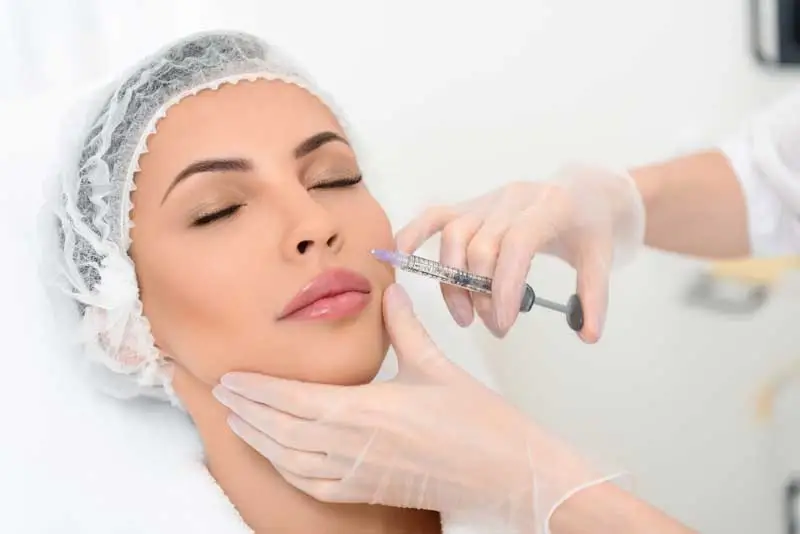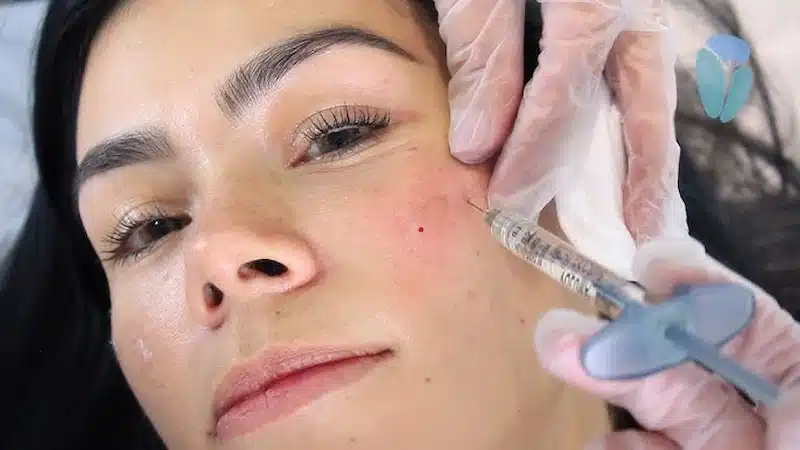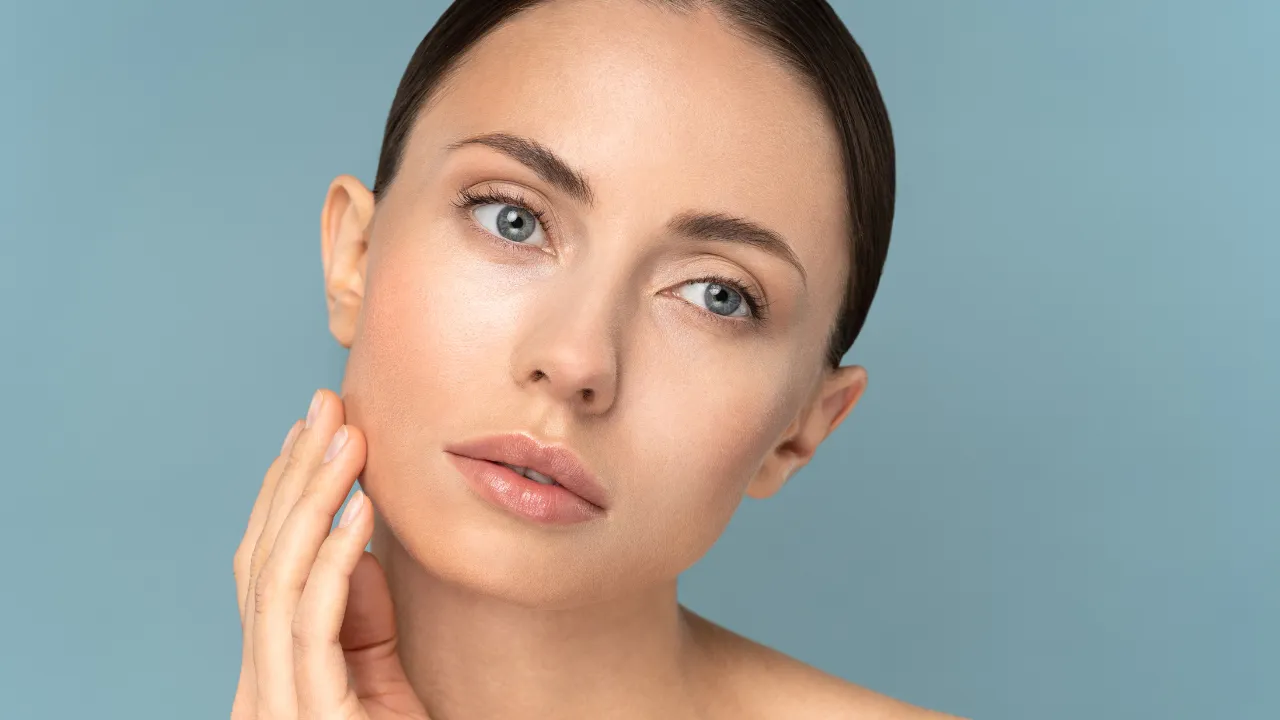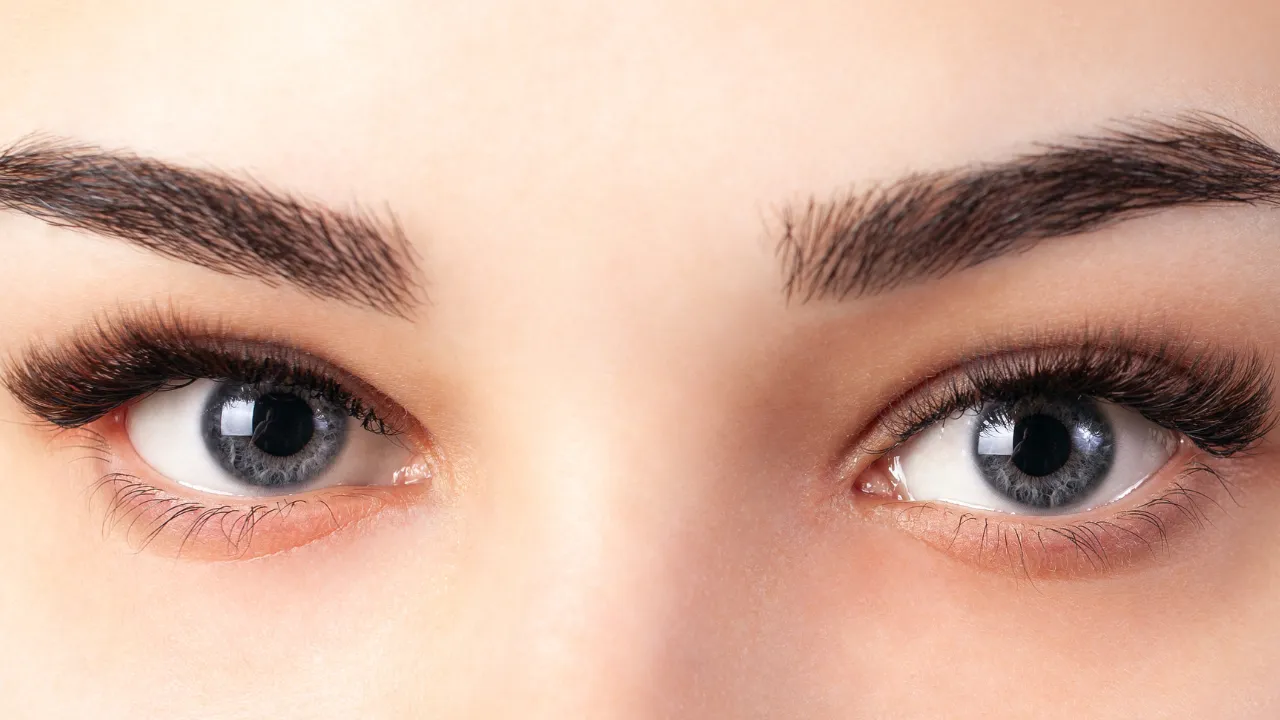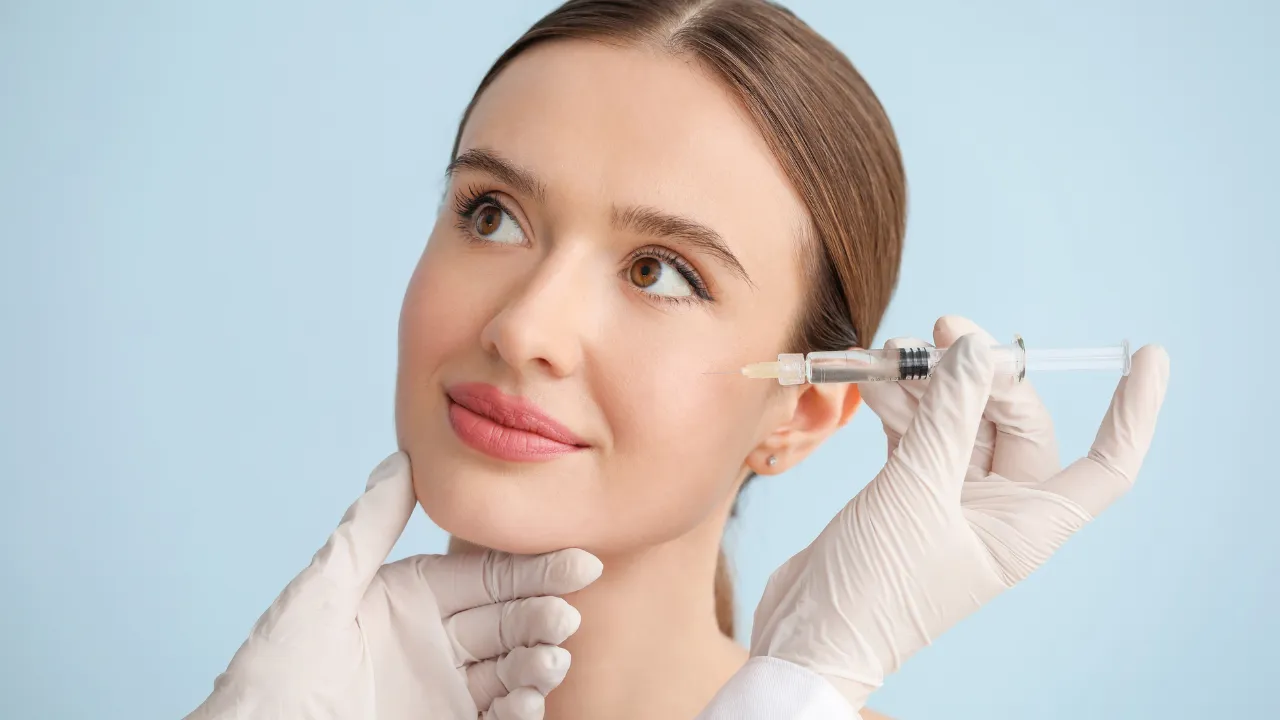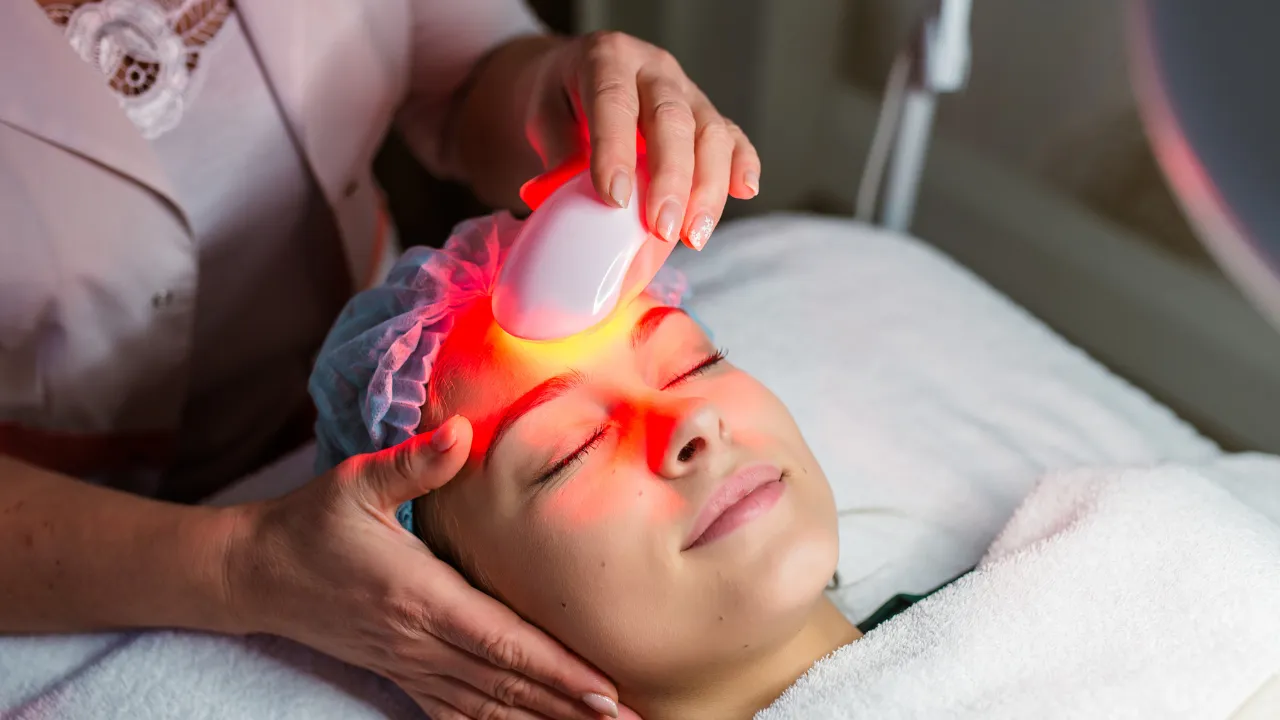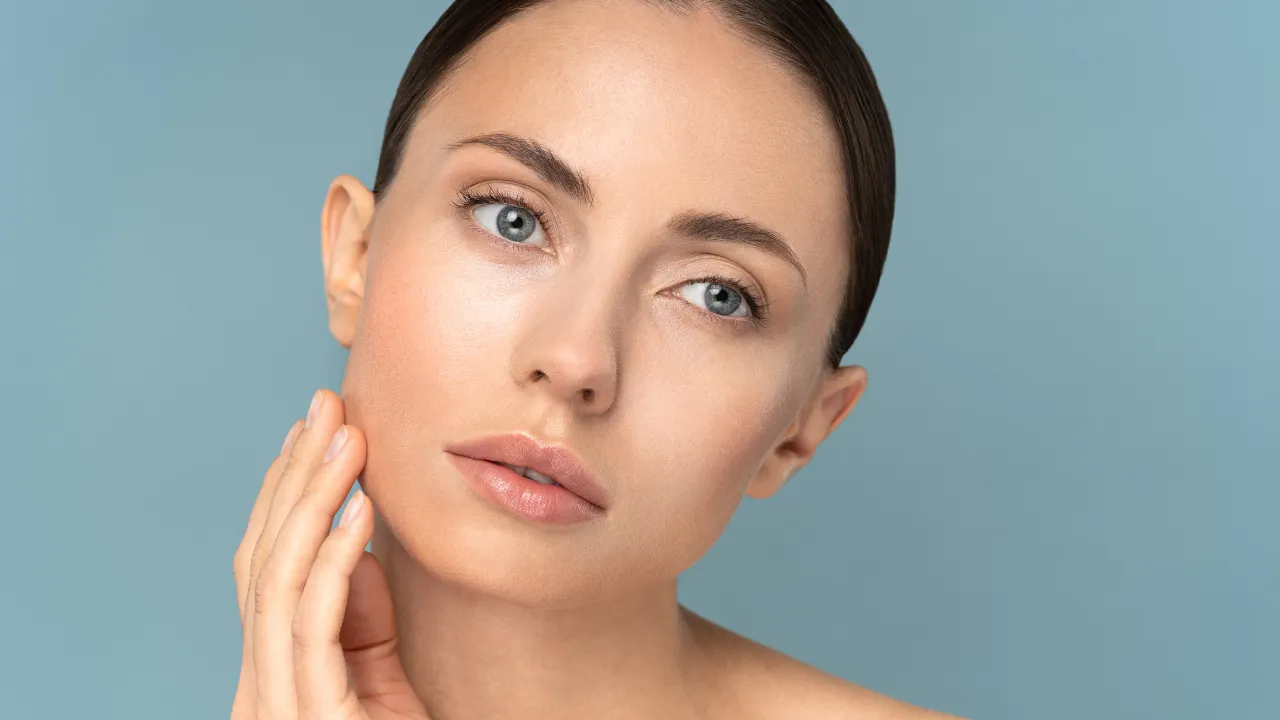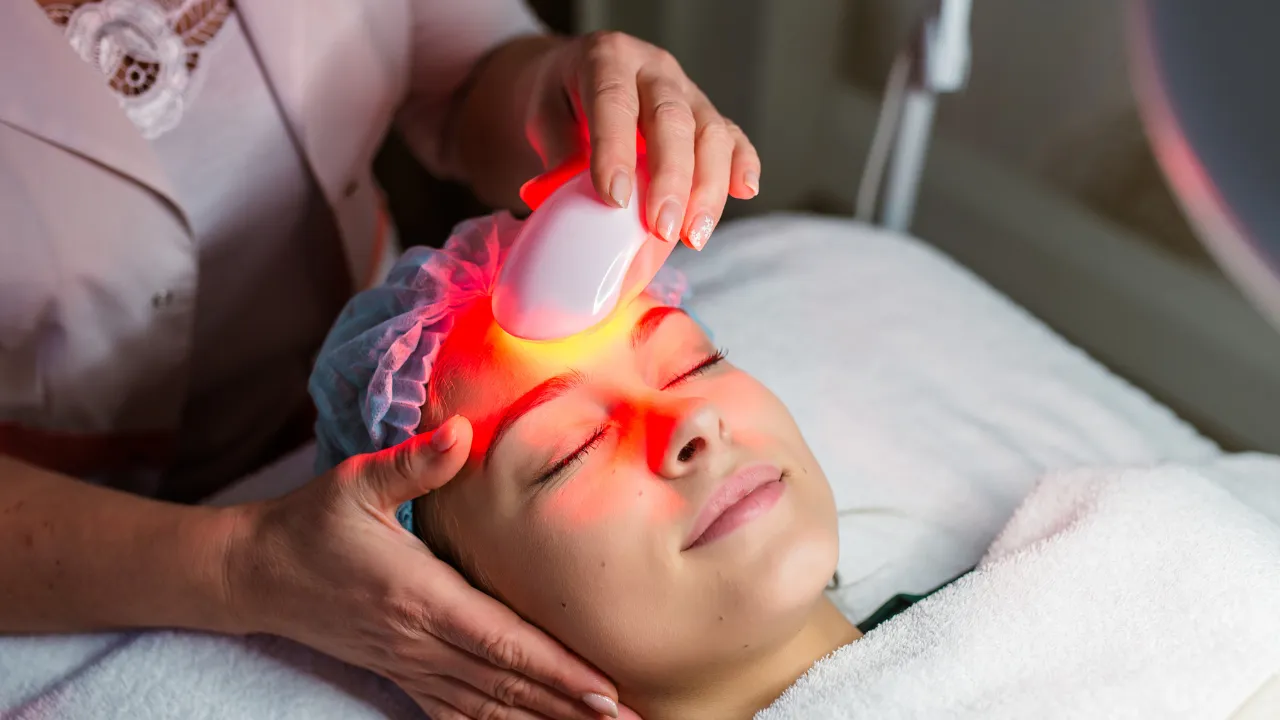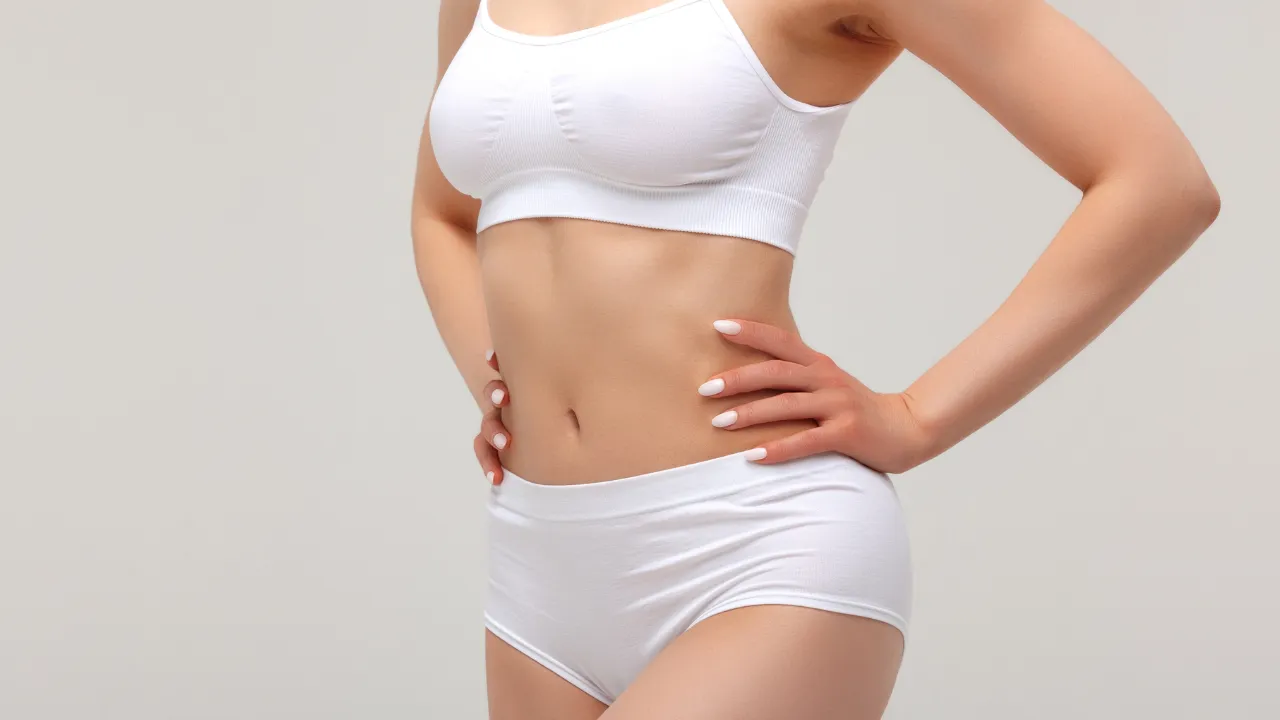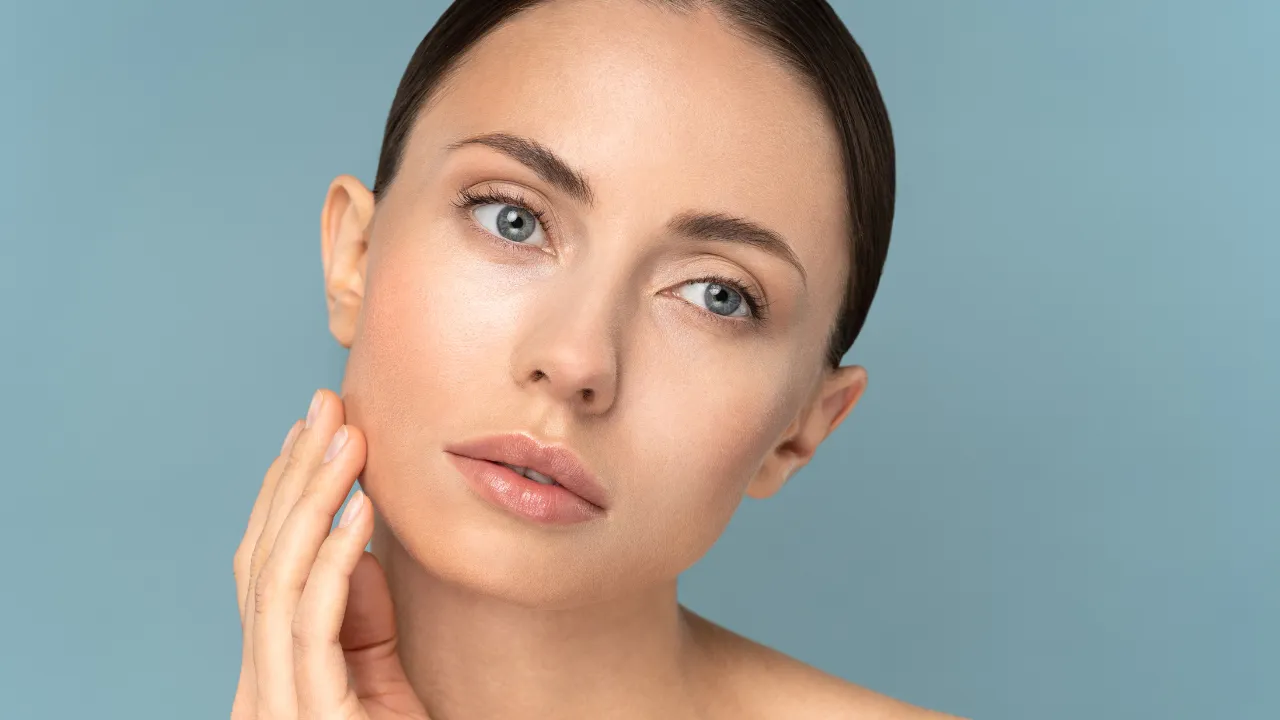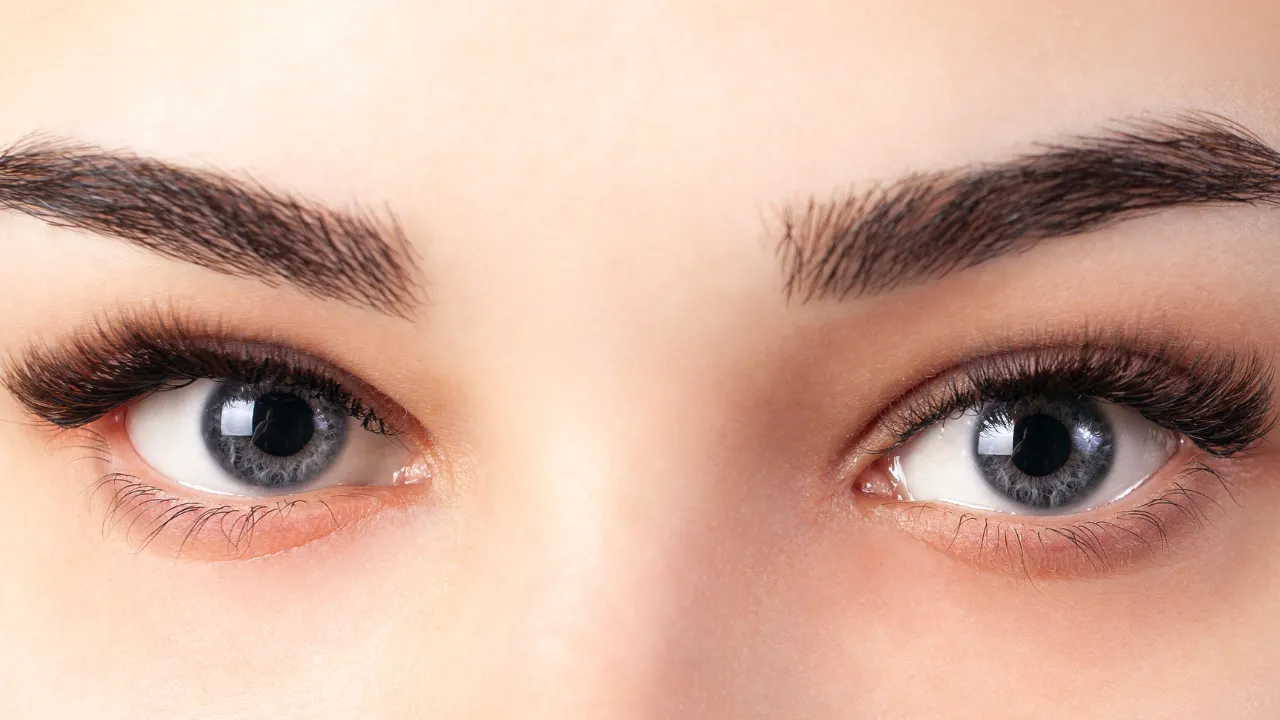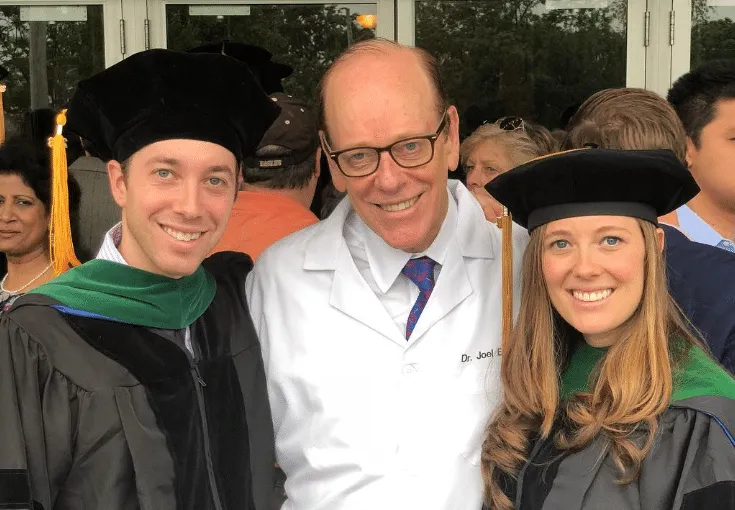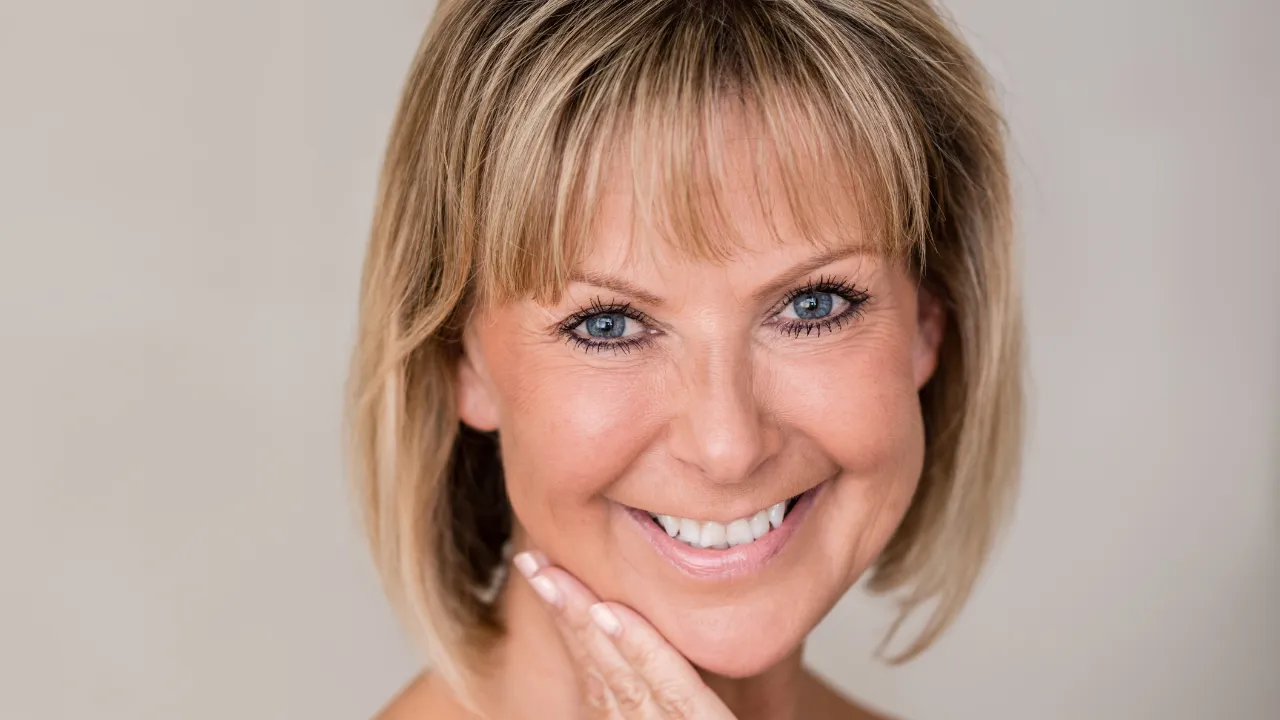Filler swelling usually peaks within the first 48 hours after treatment and fades within one to two weeks. Most patients experience mild puffiness or redness that typically improves naturally without the need for medical intervention. Proper care, such as gently applying a cold compress and avoiding excess salt or alcohol, helps speed up recovery and maintain smooth, natural-looking results.
Mild swelling after dermal fillers is a normal response as the body adjusts to the filler material. At Kopelman Aesthetic Surgery in New York City, Dr. Joel Kopelman, a board-certified facial plastic and oculoplastic surgeon, employs precise techniques to minimize swelling and bruising, ensuring natural and balanced results. Understanding how long filler swelling lasts and how to reduce it helps patients recover comfortably and confidently.
In most cases, swelling fades quickly and is rarely a sign of complications. Most patients see improvement within a few days, and any puffiness typically resolves within two weeks. Recognizing what’s normal helps reduce anxiety and ensures smoother healing.
Key Takeaways
- Most filler swelling peaks within 48 hours and usually resolves in two weeks.
- Mild swelling and redness are common; persistent or painful swelling beyond two weeks should be evaluated.
- Applying ice, sleeping with your head elevated, staying hydrated, and limiting salt intake can help reduce swelling after filler treatments.
- Delayed swelling can occur months later but is treatable when managed by a qualified injector.
- Choosing a skilled specialist like Dr. Joel Kopelman ensures safe recovery and natural-looking results.
Table of Contents
ToggleUnderstanding Filler Swelling
What Causes Filler Swelling
Filler swelling occurs when the body reacts to the injection process. The needle and injectable fillers cause a mild inflammatory response, a normal part of the healing process. The amount of swelling can also depend on the product used, as different formulations vary in thickness and hydration levels among the most popular fillers.
Swelling levels depend on:
- Injection technique and depth
- Filler type and thickness
- Individual healing response
- Skin sensitivity
Most swelling appears within 24 to 48 hours. In the hands of experts like Dr. Kopelman’s, careful placement and conservative volume reduction minimize tissue trauma, thereby avoiding pressure on nearby blood vessels and enhancing circulation and comfort.
Filler Swelling Timeline and Duration
Swelling peaks in the first two days, then gradually decreases. Minor puffiness may persist for up to two weeks, depending on the filler and the treatment area.
At-a-Glance Recovery Summary
- Days 1–3: Noticeable swelling or mild redness.
- Days 4–7: Puffiness fades, appearance softens.
- Week 2: Swelling settles, contours even out.
This short timeline helps patients know what’s typical for recovery. Cheek fillers may settle more slowly than softer under-eye or lip fillers. Ice and low sodium intake help reduce swelling duration.
Filler Swelling by Area
Swelling at the Injection Site
Slight redness or raised skin after treatment is normal and typically subsides within a few days. Areas like cheeks swell less than thinner skin, such as lips or under-eyes. Gentle care and following post-procedure instructions help reduce visible puffiness.
Under-Eye and Lip Swelling Differences
Thin under-eye skin and vascular lips swell more noticeably but resolve within three to five days. Avoid alcohol, salt, and vigorous exercise to limit inflammation.
Sleeping with your head slightly elevated on two pillows helps reduce fluid buildup overnight, which can prevent morning puffiness after filler swelling.
Treating and Managing Filler Swelling
Fastest Ways to Reduce Filler Swelling
To ease swelling quickly:
- Apply ice packs in short intervals or try gently applying a cold compress several times a day.
- Avoid touching or pressing treated areas.
- Stay hydrated.
- Skip heavy workouts for two days.
Patients treated by Dr. Kopelman often notice faster recovery due to his precise, anatomy-based technique and tailored post-treatment care instructions that support optimal healing.
Filler Swelling Treatment Options
Most swelling improves naturally, but some treatments can help:
- Cold compresses
- Head elevation during rest
- Gentle massage (if approved)
- Over-the-counter antihistamines

Topical arnica gel and mild antihistamines may also help reduce inflammation, if recommended by your healthcare provider. Some patients use hyaluronic acid-based facial fillers that naturally retain moisture and may cause mild swelling and bruising, which typically resolves within a few days.
Expected vs. Abnormal Signs
- Expected: Mild puffiness, warmth, or tenderness.
- Abnormal: Sharp pain, redness, or swelling for more than two weeks.
Consult your injector if symptoms worsen or don’t resolve.
Home Care and Aftercare Tips
Simple steps promote smoother healing:
- Keep the area clean and avoid makeup for 24 hours.
- Sleep with your head elevated.
- Limit heat exposure and avoid saunas.
- Don’t massage unless directed.
Mild bruising or swelling after filler swelling improves gradually with proper care.
When Swelling Lasts Longer Than Expected
Filler Swelling When Sick
Cold, sinus infection, or allergies can temporarily worsen swelling. Once the illness passes, puffiness usually subsides. Postpone filler appointments if you’re unwell to avoid unpredictable results.
Filler Swelling Months Later
Rarely, swelling appears months later due to immune or bacterial reactions. These cases are well-documented in medical research and can be safely treated under professional supervision. You can read more about under-eye filler swelling months later to understand what causes delayed reactions and how they are managed.
Dr. Kopelman’s team evaluates each case to rule out infection, delayed inflammation, or an allergic reaction to the filler material and provides appropriate care if needed.
When Swelling Requires Medical Attention
Swelling that persists beyond two weeks, redness, or heat around the area may signal an infection or potential side effects of dermal filler injections. Seek medical assessment promptly.
Keeping a short photo log helps track progress and provides useful context for your provider.
Before and After Results
Comparing Early vs. Final Appearance
Initial swelling can make results look exaggerated. As puffiness fades, the final look becomes softer and more natural within two to four weeks. For patients wondering if fillers stretch your skin, the short answer is no — when performed correctly, they restore volume without damaging elasticity.
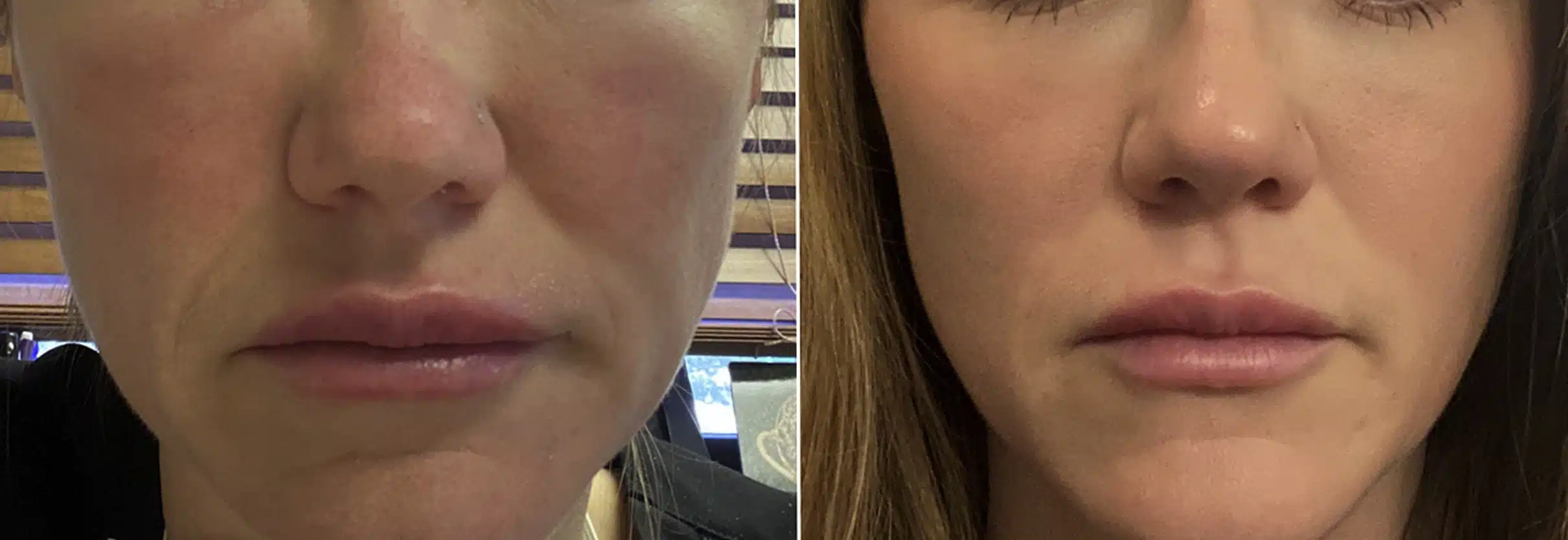
How to Know If Healing Is On Track
Mild tenderness and gradual improvement are normal. If swelling doesn’t change after two weeks, schedule a checkup.
With over 35 years of surgical experience, Dr. Joel Kopelman and his team use proven post-care protocols to minimize swelling and ensure balanced, natural results.
Preventing Excessive Filler Swelling in Future Treatments
Reduce swelling risk by:
- Avoid alcohol and blood thinners before treatment.
- Staying hydrated and eating a balanced diet are essential for overall well-being.
- Selecting an experienced injector.
- Following all aftercare instructions.
Dr. Kopelman’s personalized approach ensures minimal downtime and consistent, natural outcomes. By understanding and managing filler swelling related to injectable fillers, you can achieve a faster recovery, reduced side effects, and longer-lasting results.
Your Next Step
If you’re considering dermal fillers or want expert guidance on managing filler swelling, schedule a consultation with Dr. Joel Kopelman at Kopelman Aesthetic Surgery in New York City. His personalized approach, advanced techniques, and comprehensive post-treatment support ensure safe, natural-looking results with minimal downtime.
Contact the clinic today to schedule tour consultation and begin your journey toward refreshed, confident skin.

